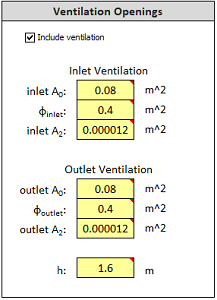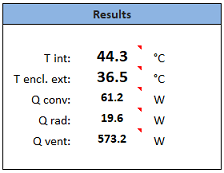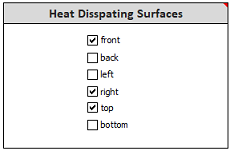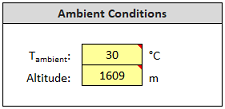The enclosure temperature rise calculator is used to calculate the average internal air temperature of a cuboid enclosure with internal heat generating components cooled via natural convection and radiation.
Ensuring that the internal enclosure air temperature remains below the operating limits of the housed components is critical to avoid thermal damage and product failure.
The enclosure can either be completely sealed or ventilated at the top and bottom to facilitate cooling of the internal components. Examples for which the calculator can be used to evaluate the average internal air temperature are:
Immediately calculate your enclosure temperature rise: No programming necessary. All the calculations are done using spreadsheet formulas and VBA macros. Simply enter your enclosure dimensions, ambient conditions, and heat loss values and the results are displayed instantly.
Quickly evaluate the influence of design changes: See how changes to the enclosure dimensions, surface finish or ventilation dimensions affect the enclosure temperature by changing a few numbers.
Built for thermal analysis novices and experts alike: No expert thermal analysis knowledge is need to run the calculator. Since the inputs to the calculator only required dimensional and component heat loss information, the calculator can be used by mechanical and electrical engineers as well as designers and technicians.
Created in an easy to use Excel spreadsheet: Working in a familar spreadsheet formula allows you to utilize powerful formulas and other functionality when conducting your analysis.
Evaluate both sealed and ventilated enclosures:
The effect of ventilation opening can be included or excluded as desired. The ventilation area, porosity and distance between ventilation openings can all be varied to determine changes in temperature of various configurations.

Calculate enclosure wall & air temperatures:
The average internal air and external wall temperatures of the enclosure are calculated. To help you better understand how the heat is being disspated the heat disspation attributed to radiation, natural convection from the wall and air flow through the ventilation are displayed.

Specify enclosure heat dissipating surfaces:
The enclosure surfaces that dissipate heat can be specified to account for surfaces that may have limited or no heat transfer due to mounting on a wall or intimate contact with adjacent surfaces.

Account for the effect of altitude:
The negative effects of high altitude on natural convection are accounted for in the calculator. Enter the elevation of your enclosure and the change in air properties and corresponding reduction cooling will be calculated automatically.

The spreadsheet uses analytical and experimentally derived equations to calculate the heat transfer from the internal heat generating components to the internal surfaces of the enclosure through the enclosure wall and finally from the external enclosure surfaces to the external environment. For ventilated enclosures the heat dissipated by the flow of air through the ventilation opening is included in the analysis. See the follow blog articles for a detailed explaination of the calculations: